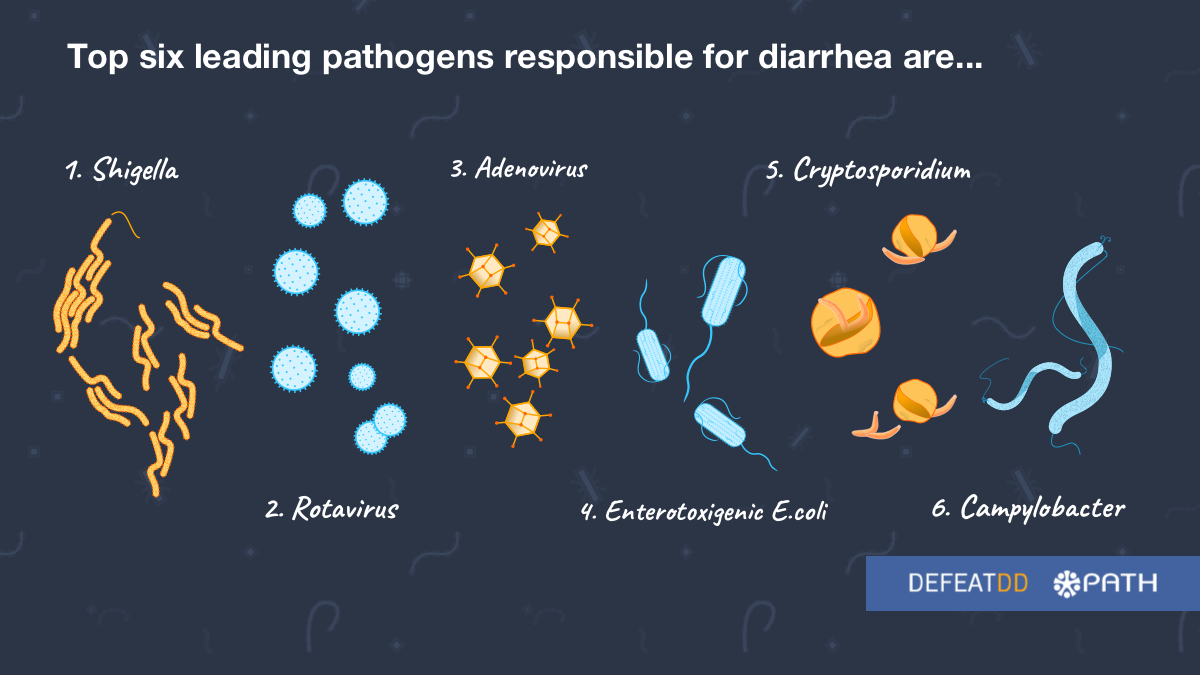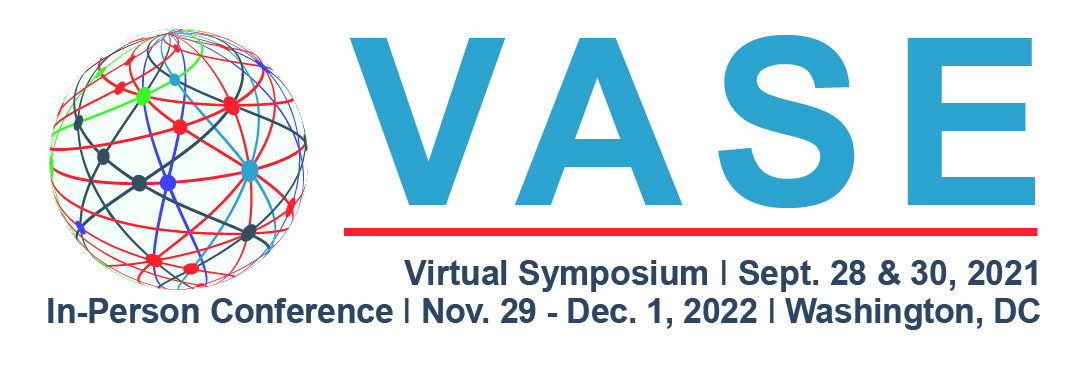
New frontiers for the enteric vaccine pipeline: Better data, better models, better policy

E. coli, Shigella, Cryptosporidium, Salmonella.
Among infected children, these gut pathogens can cause serious illness, long-term consequences such as stunted growth and weakened immunity, and, too often, death. That’s why scientists and advocates have long sought to develop vaccines against them.
They were also the focus of PATH’s Vaccines Against Shigella and Entertoxigenic E. coli (VASE) Virtual Symposium, held on September 28 and 30, 2021. This virtual gathering aimed to provide updates on important research advances in the enteric vaccine field since the last VASE Conference in 2018. Presenters and more than 250 participants from over 30 countries shared and discussed updates on burden of disease estimates, vaccine development, health impact modeling, and vaccine policy considerations needed to ensure access in the future. A few highlights are summarized here.
1. Bacterial diarrhea pathogens account for significant disease in young children
To start the Symposium, Dr. Gagandeep Kang from Christian Medical College, Vellore, India shared an update from the World Health Organization’s (WHO) Burden of Enteric Disease Working Group. The group aims to improve the different disease burden modeling techniques for enteric pathogens, including, but not limited to: enterotoxigenic E. coli (ETEC), Shigella, Cryptosporidium, invasive non-typhoidal Salmonella (iNTS), rotavirus, norovirus, and adenovirus. While different groups use different methodologies and therefore derive different estimates, this working group has identified improvements and ways to come to closer agreement about the most accurate estimates.
 Overall, modeling groups agree that bacterial pathogens such as ETEC and Shigella pose a significant and likely underestimated disease burden on children, with the highest burden in contexts with limited sanitation and unsafe water. Seeking better data and modeling techniques to articulate the comprehensive burden associated with enteric infections will help target interventions where they are most needed.
Overall, modeling groups agree that bacterial pathogens such as ETEC and Shigella pose a significant and likely underestimated disease burden on children, with the highest burden in contexts with limited sanitation and unsafe water. Seeking better data and modeling techniques to articulate the comprehensive burden associated with enteric infections will help target interventions where they are most needed.
2.Vaccine candidates are showing encouraging promise in clinical trials
Two panels of speakers presented updates on clinical trials of vaccine candidates for Shigella, ETEC, or iNTS—or a combination of multiple pathogens—that have either recently finished, are underway, or are planned. Several Phase 1 trials reported encouraging results for safety and immune response. The most advanced ETEC vaccine candidate, ETVAX®, recently completed a Phase 2b trial for protection against travelers’ diarrhea among Finnish travelers to Benin. The trial confirmed ETVAX’s excellent safety and immunogenicity, with more research needed to confirm efficacy against ETEC diarrhea. The candidate will proceed to Phase 3 studies, bringing it one step closer to use among travelers. A Phase 1 trial for ETVAX among adults and children in Zambia, where ETEC diarrhea is endemic, was also recently completed, advancing ETVAX to a Phase 2b efficacy trial among children in the Gambia. These new results build on an earlier successful Phase 1/2 study with ETVAX in young children and infants in Bangladesh.
3. New modeling tools can help us better understand enteric infections and their long-term consequences
While deaths due to enteric disease are declining, morbidity and long-term health consequences may actually be increasing. Such infections can damage the gut lining and cause lasting inflammation—a condition known as environmental enteric dysfunction (EED)—leading to stunted growth, cognitive impairments, and increased susceptibility to other diseases. Data on these lifelong impacts, however, are limited and often poorly represent the regions where the burden of enteric infections is high.
That’s where models can help. As Dr. Richard Guerrant of the University of Virginia explained in his keynote address on the second day, models, genetic and metabolomic tools can help explain how these long-term impacts happen, develop biomarkers to identify these conditions, and ultimately develop interventions to prevent or treat. Other presenters showcased models that can help accelerate vaccine development, diagnose infections, or explore how EED diagnoses may impact vaccine efficacy.
4. New policy paradigms can help ensure future access to these vaccines for those who need them most
Finally, two speakers touched on policy considerations needed to advance enteric vaccines from the laboratory to countries’ immunization schedules. Dr. Adwoa Bentsi-Enchill of WHO shared that they are developing a concept for new guidance on the type of evidence that is anticipated to be required for the policy development of any new vaccine candidate. Called Evidence Considerations for Vaccine Policy (ECVP), this guidance would be developed in partnership with relevant stakeholders before a vaccine candidate begins a Phase 3 trial. PATH’s Dr. William Hausdorff also shared insights on public health value propositions for vaccines, noting the necessity of estimating demand, ensuring competitive prices, and designing practical vaccines by gathering input directly from the decision-makers and healthcare providers where they will be used. Such a value proposition is currently underway for Shigella vaccines.
 It’s clear that vaccine development for Shigella, ETEC, and other enteric pathogens has made significant progress in recent years despite the world’s need to focus on the COVID-19 pandemic. This research and more will be expanded upon at PATH’s 2022 VASE Conference, which is expected to be held in-person on November 29 to December 1, 2022 at the Renaissance Washington, DC Downtown Hotel. For more information and updates, visit: www.vaseconference.org.
It’s clear that vaccine development for Shigella, ETEC, and other enteric pathogens has made significant progress in recent years despite the world’s need to focus on the COVID-19 pandemic. This research and more will be expanded upon at PATH’s 2022 VASE Conference, which is expected to be held in-person on November 29 to December 1, 2022 at the Renaissance Washington, DC Downtown Hotel. For more information and updates, visit: www.vaseconference.org.


